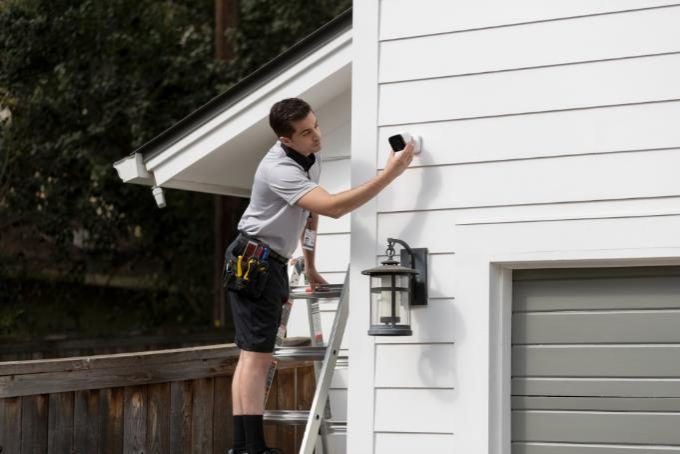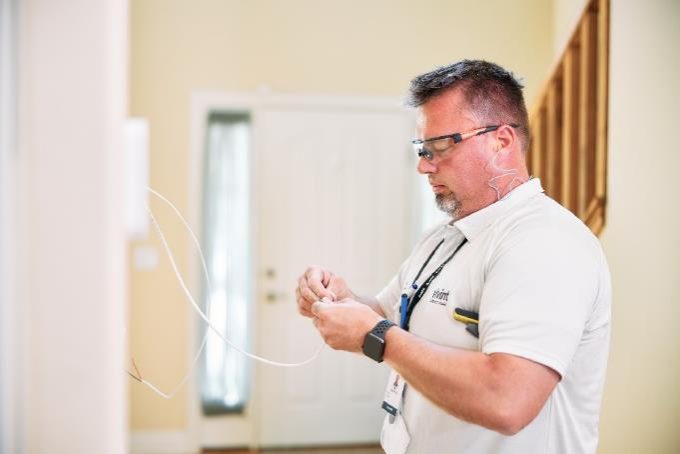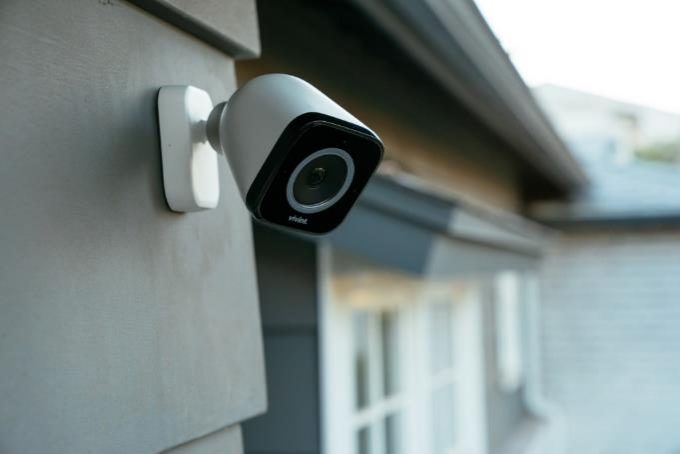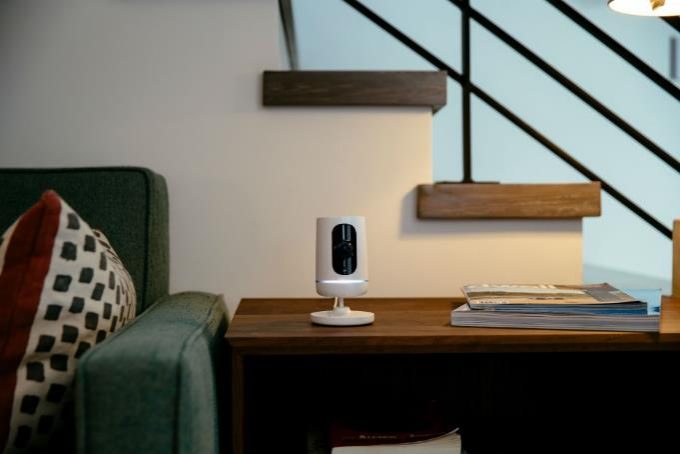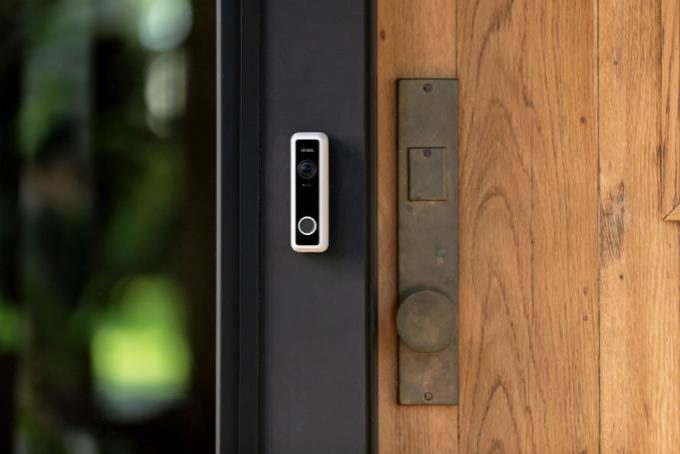The Complete Guide to Professional Installation, DIY is all the rage now, with entire TV shows and social media dedicated to helping the do-it-yourselfer learn how to do many things around the house.
But when it comes to DIY, some things are best left to the pros—and with your home’s security and home automation, professional installation is the way to go.
If you’re used to going the DIY route, you may be hesitant about professional home security installation. But there are many different reasons it’s a smarter, more affordable option than DIY.
.A Smart Home Pro is there to not only install your system, but walk you through how to use it.
Why professional installation?
Take a look at a few reasons why it pays to leave your security system install to the pros:
Our Smart Home Pros will work with you and suggest the best place to install your equipment.
How professional installation works—from consultation to install
It’s helpful to have a basic understanding of what professional installation entails and what you can expect throughout the process.
With Vivint, you’ll work with Vivint Smart Home Pros every step of the way, from customizing your system to the day of installation. Here’s how it works:
Initial smart home consultation
The process starts with your initial smart home consultation. Here, you’ll work with a Smart Home Pro to customize a system that fits the needs of your home. This might include adding extra security cameras outside your home if you have a large lot you want to keep an eye or, or you might want to upgrade your home to all the latest smart home technology. Whatever you want, our Smart Home Pros will help you design it.
From there, you’ll schedule the installation of your new system. Vivint has Smart Home Pros all over the country, so you’ll easily find an alarm installer near you.
Install day – arrival and walkthrough
On the day of installation, your Smart Home Pro will contact you prior to arrival to let you know they’re on the way. All Vivint Smart Home Pros are licensed and take the health and safety of your family very seriously, following all necessary health protocols.
Once they arrive, you and your Smart Home Pro will go over the items you ordered, making sure everything is accounted for. Then, you’ll do a walkthrough of the home together. Your installer will get a better idea of what devices you already have, if any, and determine the best placement for your devices.
Once they have the general layout of your home and know your goals, the install begins. Your Smart Home Pro will start with your Smart Hub, the central control panel for your system. From there, they’ll install the rest of your home’s devices. Depending on the system you have designed, this could include:
.
Home security devices
Your basic home security set up typically includes security sensors that protect your doors and windows from unauthorized entry. If an intruder attempts to enter the home through a door or window that has a security sensor, the alarm will sound. Your Smart Home Pro will work with you to decide the doors and windows that need sensors for the best protection.
Your safety alarms will also be installed. This includes smoke detectors and carbon monoxide detectors. Smart Home Pros will ensure they are installed according to local guidelines and regulations.
Security cameras
Camera installation includes security cameras for your home, inside and out. Security camera installers in particular need to be mindful of areas you want to ensure are visible or recorded by the camera so they can place them in a way that provides the best view. This includes:
Home automation installation
If your system includes smart home devices, professional installation will also include your home automation devices, such as:
During the actual installation of your devices, your installer will conduct tests to ensure everything works the way it should. Depending on the number of devices you have, you can expect the installation to take several hours.
Smart Home Training
Once installation is complete, it doesn’t end there—your Smart Home Pro will train you on your new system so you can get the most out of it. You’ll learn how everything works, how to program your devices, arm your system, and so forth. Your Smart Home Pro will also answer any questions you have.
After installation
Your system is installed and up and running? Now what? Vivint systems include 24/7 monitoring, so you have the peace of mind that comes with knowing your home is being professionally monitored around the clock.
And if you forget how to operate a device or have a question later, don’t worry—Vivint has an extensive library of resources online as well as an entire team dedicated to helping you with your system should you have any questions.
Start protecting your home with a professionally installed system today
With home security and home automation, professional installation is the way to go. And with a system from Vivint, you can sit back and leave the work to the Pros, letting you take advantage of all the benefits of your new system.
.
Should I Install Security Cameras in My Home?
If you’re looking to increase peace of mind, few things compare to being able to see what’s happening in and around your home at any time. Home security cameras give you the ability to view live and recorded video so you’re always in the know.
But with so much information and so many options out there, it’s easy to feel overwhelmed while shopping for cameras for your home. That’s why we’ve created this guide to help you find the right home security cameras for you.
Why get security cameras?
Before we start, ask yourself this question: do you actually need a home security camera? Here are some signs a home security camera may be right for you:
Each homeowner’s needs may be different, but the peace of mind you gain from having a home security camera is invaluable.
While needs differ, all homeowners can benefit from the peace of mind that security cameras bring.
What security camera should I get?
Choosing the right security camera for your needs is important. There are three common types:
Let’s take a look at each and what you should consider.
.
Doorbell camera
The doorbell camera is the most popular camera as it allows you to monitor the most crucial access point to your home. You can also see who’s coming and going, when packages are delivered, and some video doorbells allow you to have two-way conversations with guests at your door.
Look for a doorbell camera with these features:
The Vivint Doorbell Camera Pro is one of the most advanced video doorbells available. It stands out from the crowd with the widest and tallest field of view—a full 180°x180°, allowing you to see tall visitors and packages left on the doorstep. It also comes equipped with Smart Sentry AI technology that notifies you of package deliveries and deters potential thieves using light and sound.
Outdoor camera
Outdoor cameras provide video coverage around your house. Often, homeowners will install multiple outdoor cameras to make sure every angle of their property is being monitored.
There are many different types of outdoor cameras on the market, from sleek, small outdoor cameras to dome cameras to bulky surveillance cameras. You want to choose an outdoor camera that effectively records video while also not detracting from your home’s visual appeal.
Look for an outdoor camera with these features:
The Vivint Outdoor Camera Pro is a top-of-the-line security camera that intelligently identifies and deters lurkers and threats on your property. With its 4k sensor, you’ll get clear images of what’s happening around your property. And the camera’s sleek design and smaller size look nice on the house.
Indoor camera
Indoor cameras have been around for a long time and go by many names, including nursery cameras, nanny cameras, and hidden cameras. These cameras often cost less than an outdoor camera or doorbell camera, allowing you to place more of them in important areas of your home.
More than a convenience, indoor cameras allow you to have an extra set of eyes, which is especially valuable if you have kids or pets always on the move.
Look for an indoor camera with these features:
The Vivint Indoor Camera is an indoor camera designed for the home. It’s the world’s first indoor camera with true two-way communication. Not only can you see and hear what’s happening in your home, but the occupants of the room can also respond. They can also proactively connect with you through the camera’s one-touch call button.
Wired vs. wireless cameras
One of the most important considerations is choosing between wired or wireless cameras.
Wired cameras provide added levels of security and more consistent connectivity, but can also sometimes be difficult to install depending on your home’s wiring and surface materials. Wireless cameras allow for more flexibility in their placement, but sometimes suffer from difficulty connecting with your home’s WiFi, leaving you with cameras that frequently go offline.
Wireless cameras are often the way to go due to their greater flexibility, but be sure your WiFi connection is strong and add WiFi extenders or change to a mesh WiFi system if needed.
How much do home security cameras cost?
Home security cameras run from less than $50 to more than $1,000 dollars. Selecting the right camera largely depends on what you want it to do. Most cameras perform the same general tasks, so pay attention to the features that matter the most to you.
Like so many other things, you get what you pay for. Saving a few dollars upfront may not save you money in the long run if the camera suffers from connectivity issues, you’re constantly having to change batteries, or it doesn’t record at a high enough quality for you to use the footage.
Investing in high quality security cameras means that you’ll be able to rely on them for years to come.
Where to place and install home security cameras
Deciding where to place your home security cameras is something you should do before you purchase. Not sure where to install them? Here are some tips:
Once you’ve purchased your home security cameras, they need to be installed. Indoor cameras are usually plug-and-play or battery-powered, so they are easy to install.
Doorbell cameras require a little bit of technical skill, but usually have instructions and can be installed in about an hour. The viewing angle of the doorbell camera you purchase will be a factor in where you install your camera. If your camera has a wide 180-degree view, you can usually install the camera right next to your door.
It’s important to think about where you want to place your cameras as well.
Outdoor cameras require the most skill and time to install. Outdoor cameras should be installed about 11 feet above the ground and not point toward the sun, as much as possible. This allows for a wide view to be captured and is out of the reach of individuals who may want to vandalize or disable the camera. But it’s not so high that it can’t capture important details like faces.
Outdoor cameras have to be powered so you will need to find a way to provide power to a camera. A PoE solution (Power over Ethernet) is a good way to go, but will likely still require you to run some wires, and this often requires drilling holes and going into your attic. Getting your WiFi signal to the outdoor camera may also present a challenge.
If installing home security cameras sounds intimidating, many camera providers—including home security companies like Vivint—offer professional installation. We provide professional installation with every complete smart home security system, making sure everything is properly installed and works together. That means fewer headaches and more peace of mind for you.
With Vivint, our Smart Home Pros will install your security system start to finish, ensuring everything works correctly.
Getting the most out of your cameras
Once your cameras are installed you should be able to take advantage of their streaming and recording capabilities. To get the most out of your cameras, consider the following tips.
What’s next?
When you customize a complete Vivint security system, you can rest easy knowing you’re getting the best of the best. Here’s what we mean:
.
